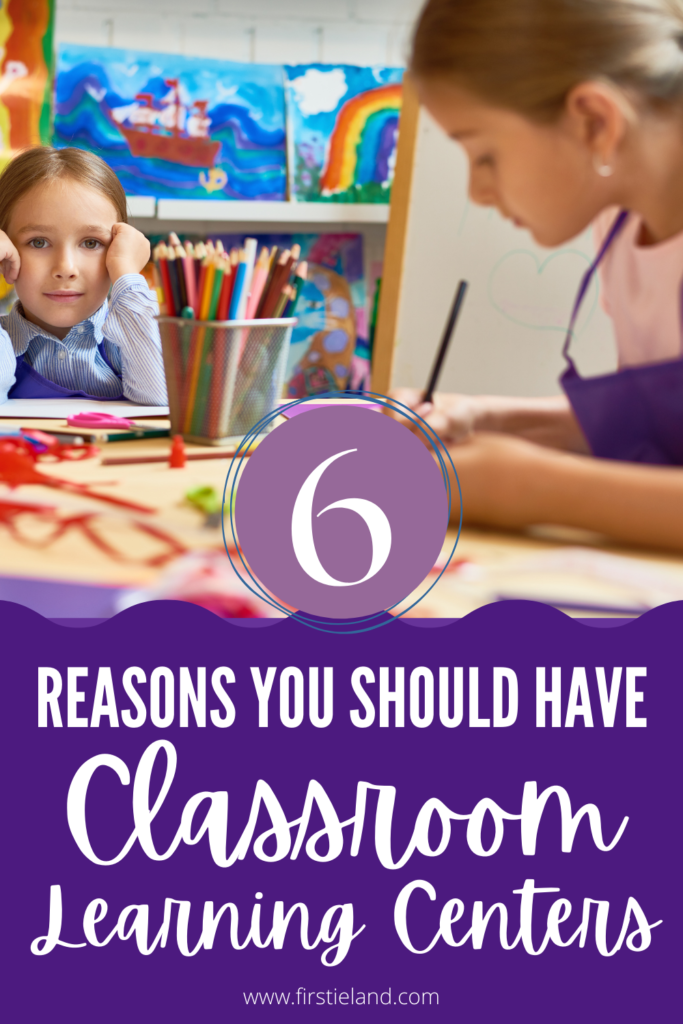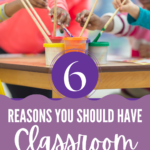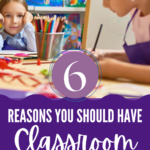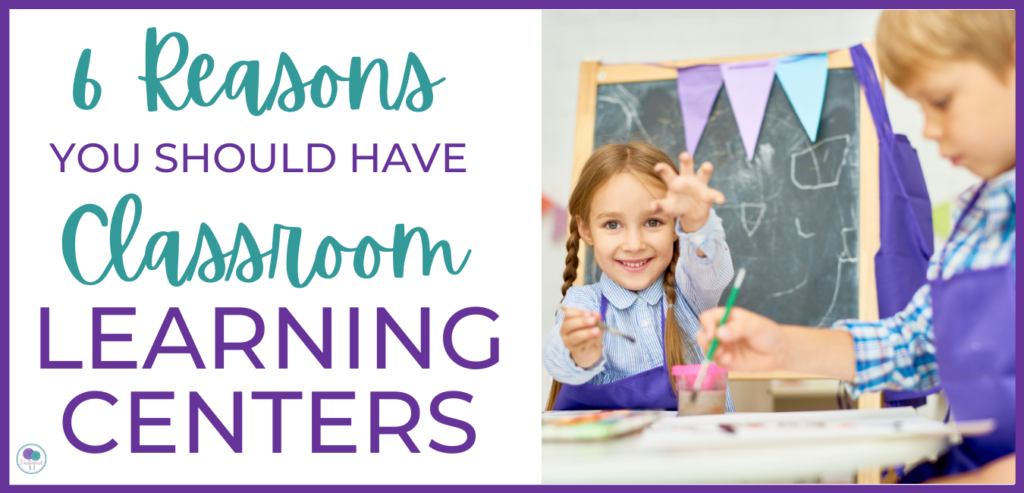
If you struggle to maintain and manage learning centers in your classroom, you're not alone. Many teachers begin the year with good intentions of keeping up with their learning center rotations but as the year goes on they lose speed and sometimes fizzle out. So let's begin with the basic question…
What is the definition of learning centers in the classroom?
A learning center is a designated area in the classroom where students can practice skills that they've already been taught in class. Learning centers are filled with hands-on activities that get students excited to learn about different areas of your curriculum. When setting up classroom learning centers, many teachers base their centers on math and literacy skills but you can also include other areas like social-emotional, fine motor, art, blocks, and dramatic play.
Why should you have learning centers in your classroom?
There are many reasons learning centers are important in an elementary classroom. Learning centers are often the most treasured time of a child's day. Here are some reasons you should consider adding learning centers to your kindergarten or first-grade classroom:
1. Practice
Students need the opportunity to practice the skills you're teaching in class. They need time to work with other students, use hands-on manipulative materials, and play games without being under the direct instruction from a teacher. When students are given the chance to practice skills on their own they can try out new ways of doing things and truly make the learning their own.

2. Independence
Besides getting a chance to practice, learning centers give students the chance to demonstrate how much they've learned. When students are at math and literacy centers, teachers can monitor children while they work and play. This is the time for you to observe your students' skills. Are they able to complete the tasks without your assistance? You'll be able to tell if your students understand the concepts simply by observing them. If you see that they are struggling you can step in and give a quick intervention.
3. Responsibility
Children also demonstrate responsibility while working at math and literacy centers. Using materials correctly, putting things away, and cleaning up are all important skills for students to develop and will further foster their independence. Learning centers are a time when students are responsible for their own work. They begin and end a task on their own, then clean up after themselves. Students can also be responsible for helping others during math & literacy centers. When the teacher is working with a small group in another area of the room, students may need to rely upon each other for help when needed. All of these things lead to more responsible students in your classroom.
4. Learning feels like play
Children learn through play. The more you can make an activity feel playful, make-believe or game-like the more students will learn. When children feel like they are playing they'll be more excited to do the activity and it will make the skills stick in their brain. They are more likely to remember skills when they are playing with and manipulating materials, than simply doing a paper/pencil task.
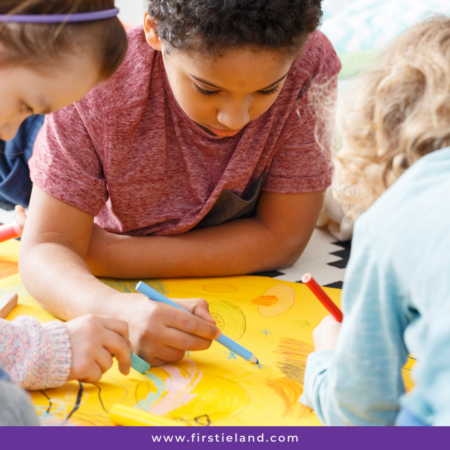
5. Opportunities for small group work
As teachers, we know that one of the most important parts of our day is working with students in small groups. When you have just a handful of students you are able to really hone in on the skills that they need. You can offer individual support and encouragement. But often teachers will ask “What do I do with the rest of my class when I'm working in small groups?”
If students are taught how to work at math & literacy centers and have a good management routine in place, teachers can work with small groups of students for 45-60 minutes while the rest of the class is occupied at learning centers and other tasks.
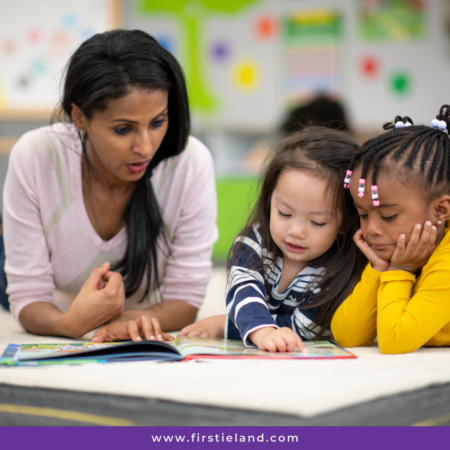
6. Differentiation
Learning centers offer so many ways to differentiate your instruction. You can have multiple activities at each of your math and literacy centers and these activities can be at different levels of difficulty. Students can choose the activity that's right for them or you can assign tasks to students.
One way of doing this is by having 3 different colored trays at each center. The activity in each tray can be a different level of difficulty. For example, at your math center, you might have students working on addition. In your red tray, you might have an activity for struggling students to do simple addition to 5. In a green tray, you may have your on-level students working on addition to 10. And your advanced students might work out of the blue tray where they will do a related facts activity. All your students can attend the same center and work on addition, but they can work at their own speed.
If you worry that students will begin to notice the difference in the work, change it up. One week have the advanced work in the blue tray. The next week have the advanced work in the red tray. That way, every student gets the chance to work out of each color tray without feeling embarrassed that they are working at a higher or lower level than other kids.
What learning centers should you have in your classroom?
When deciding on which learning centers you want in your classroom you need to think about several factors:
Classroom Size
Consider the size of your classroom when choosing how many learning centers you want in your room. Will you have each center at its own desk or table? Do you have room for this? If not, there are other options. Think about the furniture that you already have in place in your room. The shelf where you store your math manipulative materials can become the Math Center. A pocket chart already hanging on your board can become the Pocket Chart Center. Your charging station for your classroom tablets can become the Tablet Center. Your classroom library can become the Library Center. You already have so many areas in your room that can become a center without a lot of extra work for you.
Separate Center Areas
Do you want your students to go to a center or do you want your students to bring the center to their desks? Both are a possibility. I have found that a designated area away from the child's regular seat is ideal. Students need to move around and get out of their seats during the day.
Can you imagine, as an adult, having to sit in the same spot without moving all day? We could never do that. We all need to get up, move around, get a cup of coffee, or chat with a friend. Young children are the same. They need to move around and get a change of scenery to reduce their boredom and keep them engaged in learning. Math & literacy centers are the perfect solutions to fill this need.
Each center area can be designated with something that says “I am a center”. Think of using things like a small desk, a shelf, a basket, a small table, or a rug to designate where students will work at each center. Students can sometimes sit at a desk or table. But they can also sit on the floor on a small rug or carpet square. You can have many math & literacy centers in your room without taking up a lot of space.
Learning Center Tubs
If you come to the conclusion that your classroom simply doesn't have the space for learning centers, think again. You can keep your learning center materials in tubs on a shelf. Designate each tub as a different center – The red tub can be your Math Center, the blue tub can be Word Work, the green tub can be Art, etc. You can put the materials needed for your activities in ziplock bags in each tub and students can just take the center back to their seats.
In my opinion, this isn't the most ideal way of having classroom learning centers but if this is your only option then by all means do it! Your students will still love getting to do the hands-on activities from your learning centers but they will simply do it at their own desk.
You can also have a combination of both separate center areas and tubs. This can help solve the problem of lack of space as well.
Learning Center Possibilities
Many teachers focus on only math and literacy centers in their room but there are many other possibilities to choose from. Children learn in many ways and these are just some of the ideas that you could choose from:
- Math
- Writing
- Big Book
- Listening
- Library
- Word Work
- Spelling
- Phonics
- Tablets
- Computers
- Art
- Science
- Social Studies
- Sensory Table
- Blocks
- Overhead
- Dramatic Play
- Pocket Chart
It's not necessary to have all of these centers in your room. Choose what works for you and the size of your classroom. Remember that the more learning centers you have in your room, the more work it will be for you. Remember when just starting out with learning centers, begin with the easiest centers first. Areas that you already have in your classroom like your library or computer area are quick and easy learning centers to start and require very little setup and maintenance on your part!
Ready to get started? This bundle of math and literacy centers has everything you need for the entire year. Cute-themed activities for every month from September to May will keep your students excited to practice math and literacy skills. Every month they'll look forward to seeing the new games and activities, guaranteeing a class that's on task and learning…giving you time to work with small groups or individual students! Click here to take a closer look at everything included.
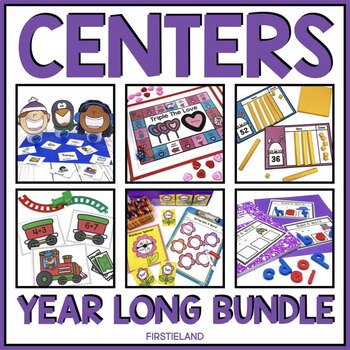
Want to know more about how to use math and literacy centers in your classroom? Check out these posts.


SAVE THESE IDEAS FOR LATER!
Take a minute to save these tips to your favorite elementary classroom Pinterest board so you can remember them later!
